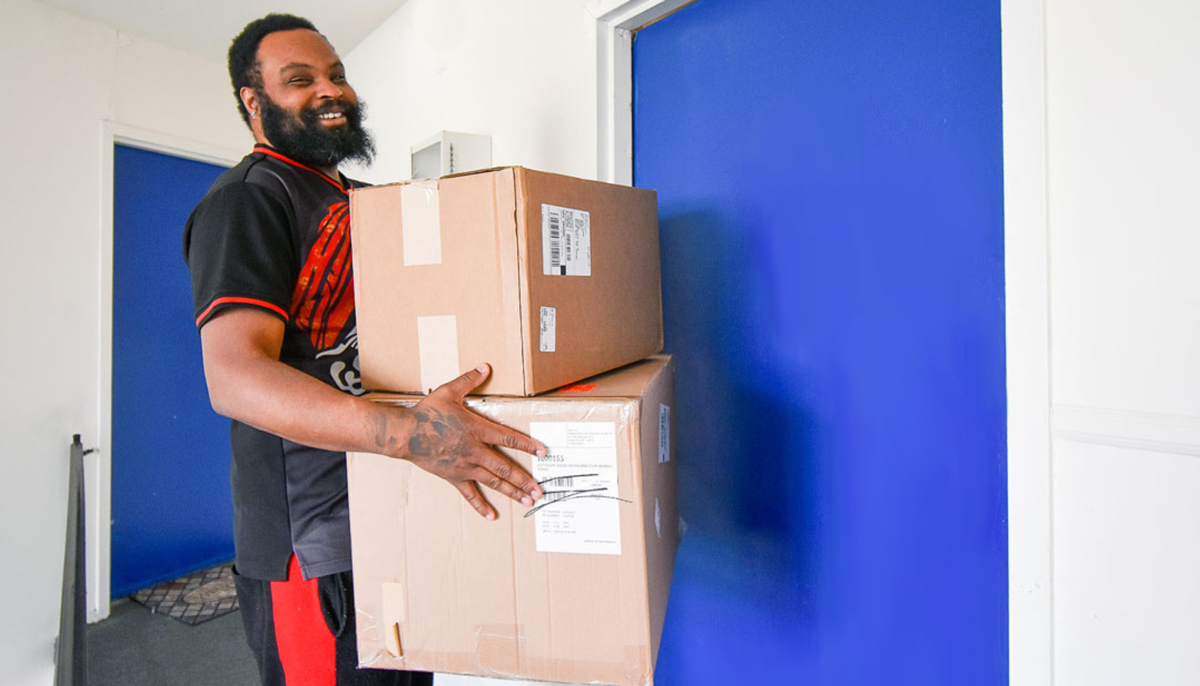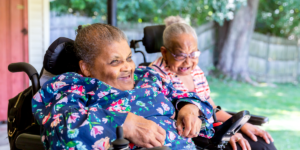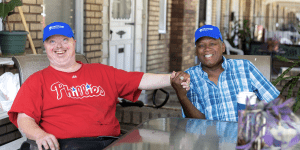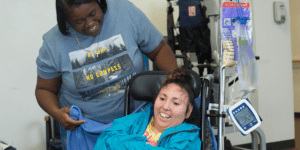KenCrest’s Supported Independent Living program enables people to live self-sufficiently through a broad range of flexible supports within the community of their choice. But how does that person know that an independent living program is right for them?
Approved in April 2022, the Stepping Stones Transitional Housing Program is a New Business Idea (a KenCrest-led grant opportunity to fund ideas, service delivery, and innovations) providing additional support for those wanting to explore and work towards living independently.
“This program provides the opportunity for those we serve not just to hear about the possibility of independent living but to practice and experience the process; they get to drive the train on their steps to independence,” says Angela Marshall, the Director of Supported Independent Living.

Achieving an independent life starts with meeting each individual right where they are, whether living in a Community Living Arrangement (group home) or within their family home. Once a prospective client, their family, and support team discuss the possibility of independent living, they can send a referral to Marshall, herself, or the Transitional Housing Program Coordinator, Vincent Waskiewicz.
From there, the Supported Independent Living team will meet with the participant and their team to chart their LifeCourse, a person-centered plan that helps those KenCrest supports to plan their life, personal goals, and desired outcomes. A visual tool, it allows each person to process the action steps and time frames needed to reach their dreams and ambitions.
The support staff will regularly check in on each client's progress while they move toward accomplishing their individualized goals. As that person’s development continues, they will spend time— with or without a staff member— in a transitional home setting, where they can practice the daily living skills needed for a fully independent environment.
“It’s important to offer this type of program because it gives participants real-life and real-time experience to practice and prepare for independent living beyond the walls of a group home,” says Marshall. “We have three ladies and one gentleman participating in the program, who are ready to live independently.”

A unique benefit of KenCrest’s Supported Independent Living and Transitional Housing Program is the inclusion of resources through the Enabling Technology program. Headed by Gregg Kelinson, Assistant Vice President of Innovations, the Enabling Technology department utilizes various technological devices to promote a safe, independent environment, such as home sensors, smart speakers, communication systems, adapted tools, and positioning equipment.
“Many of those technologies, not all, but many offer the capability for somebody to get support in a new way, like remotely,” says Kelinson.
This is extremely important for someone with a disability who is learning to live independently for the first time. Support staff can connect with clients through video equipment, like a Ring doorbell or Echo Show to see what is going on or assist participants when needed.
For those participating in the Supported Independent Living and Transitional Housing Program, not only will they discover their goals and dreams, but they will still have access to supports like help with cooking and cleaning or transportation to medical appointments depending on their skills, needs, and where they ultimately want to live.
“I hope that others (staff, supported individuals, families) hear about the successes as they come,” says Marshall. “And it will open them up to ‘exploring the possibilities’ of living independently.”










